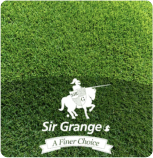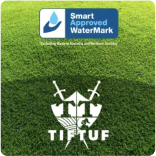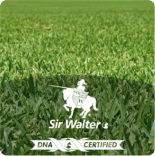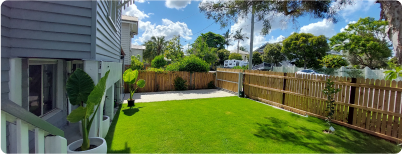Life after lawn grubs
As a homeowner, there's a unique sense of pride that comes with a beautifully manicured, lush green lawn. However, the dedication to regular mowing, fertilizing, and nurturing can be quickly overshadowed when you're confronted with large, unsightly brown patches. These are often the result of lawn grubs, a common pest that attacks the roots of your grass, leading to damaged, unhealthy patches in what was once a pristine yard. The presence of lawn grubs frequently goes unnoticed until their destruction is unmistakable, and it can seem as though your lawn was ruined overnight.
This season has been particularly challenging, with a notable surge in lawn grub infestations, specifically Army Worms. These pests are highly attracted to popular grass types such as Nullabor Couch and TifTuf, causing significant damage to numerous lawns.

The initial phase in reviving a lawn impacted by lawn grubs involves correctly identifying the issue. These pests typically reside just beneath the soil's surface, feasting on the roots of your grass. In the case of a Fall Army Worm invasion (which Brisbane is seeing a lot of this season (2024)) you may see evidence of these above ground as they will eat the leaves of your lawn in the evening. To confirm whether lawn grubs are the culprits behind your lawn's deterioration, observe for indicators such as patches of grass turning yellow or brown, a general thinning of the lawn, or areas where the grass appears dead or is dying. Additionally, applying soapy water to the affected areas is an effective method to coax the grubs to the surface during the day, making it easier to ascertain their presence.

When facing a lawn grub infestation, the choice of treatment can make all the difference. Products containing active ingredients such as imidacloprid, thiamethoxam, halofenozide, or chlorantraniliprole are known for their effectiveness against these subterranean adversaries. One standout product is Acelepryn, renowned not only for its long acting efficacy but also for its reduced environmental impact.
However, for those seeking a quicker solution, there's another option to consider: Battle Insecticide. This product is known for its fast-acting knockdown capabilities with the active ingredient being Bifenthrin. While Acelepryn and similar products work well over time, Battle Insecticide can offer more immediate results, which can be crucial in situations where grub activity is severe, and rapid action is needed. Just be mindful that proper PPE should be used when using Bifenthrin based products and it does not have sustained residual effect. You can purchase these products online at www.jimboombaturf.com.au or instore at our Acacia Ridge office
Step 3: Post treatment care
After treating your lawn for grubs, it's vital to allow it some time to recover. Remove the dead leaf material with a rake to expose the soil where you can to allow for your lawn to move back into these areas and 'peg down' new roots. For Zoysia's this will be a slower process. Follow up with proper watering to encourage recovery and regrowth. Watering should be done deeply and infrequently, promoting stronger root development. Aim for about 25ml of water per week, either from rainfall or irrigation. Now the thought to pump your lawn full of fertilizer might seem tempting here, but just hold off a couple of weeks to allow for the plant to regain a bit of strength.
Fertilizing is equally important once the plant has had a moment to recover; select a high-quality lawn fertilizer such as Lawn solutions premium fertiliser or Lawn kelper and apply it according to the manufacturer's instructions. This will provide essential nutrients that help your lawn regain its lush, green appearance. Remember, consistent and balanced watering and not over fertilizing are key to rejuvenating your lawn after grub damage.
Step 4: keep an eye out for weeds
When restoring areas of your lawn damaged by grubs, there's an increased risk of weed invasion. A dense, healthy lawn usually does a great job at naturally suppressing major weed infestations, but this isn't the case with bare patches. Normally, a pre-emergent weed control product like OxaFert would be recommended to minimize weed seed germination while providing some nutrients to the existing grass. However, in scenarios where you're focusing on regrowing lost patches, using such products might impede this process. Depending on your specific lawn recovery strategy and the extent of the damage, you might find it more beneficial to use a non-glyphosate weed control option, such as Bin-Die. These types of selective herbicides can effectively target weeds without hindering the growth of your primary lawn grass.
When the task of regrowing damaged patches becomes too challenging, or you're simply eager to see quicker results, patch repairs are an excellent solution. Purchasing a few slabs of turf in your chosen grass variety can effectively restore these areas. The process is similar to installing a new lawn: clear the damaged area, prepare the soil, lay the turf, use a roller or press to secure a good connection with the soil below it, and water it diligently. It's crucial to remove any dead grass and ensure the soil is level with the new patches for optimal growth and uniform lawn height.
To successfully rehabilitate a lawn affected by lawn grubs, a comprehensive approach involving various treatments and care techniques is essential. From identifying and treating the grubs to aerating, watering, and fertilizing your lawn, these steps will help you revive your lawn's health and vibrancy. For further guidance or support, feel free to contact our team at (07) 3114 8281 or drop an email to advice@jimboombaturf.com.au.














